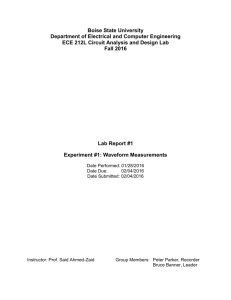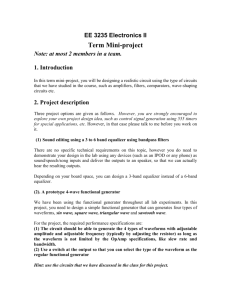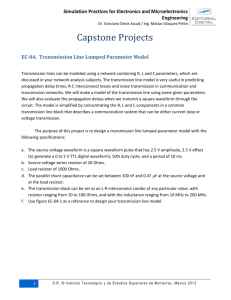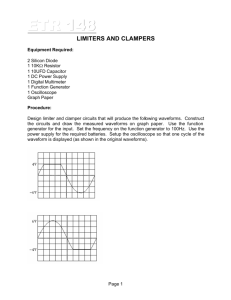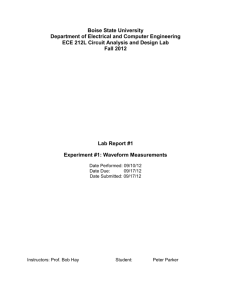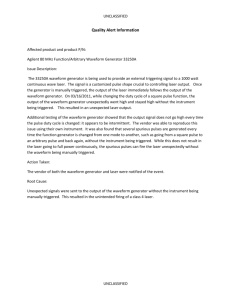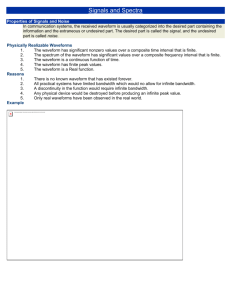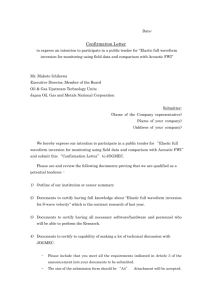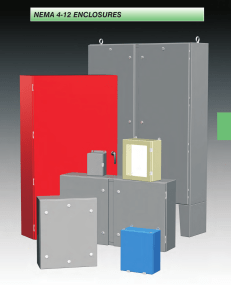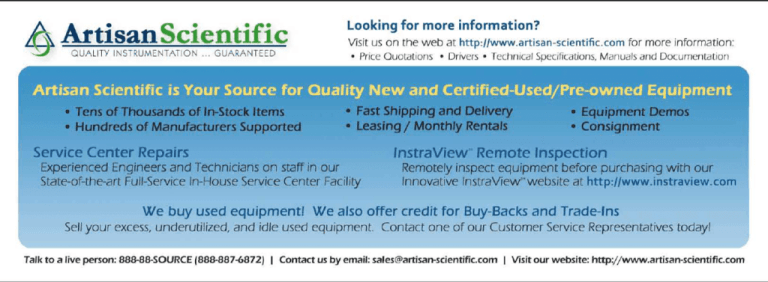
Looking for more information?
Visit us on the web at http://www.artisan-scientific.com for more information:
• Price Quotations • Drivers· Technical Specifications. Manuals and Documentation
Artisan Scientific is You~ Source for: Quality New and Certified-Used/Pre:-awned ECJuiflment
• Fast Shipping and DelIve1y
• Tens of Thousands of In-Stock Items
• Equipment Demos
• Hundreds of Manufacturers Supported
• Leasing / Monthly Rentals
Service Center Repairs
Experienced Engineers and Technicians on staff in our
State-of-the-art Full-Service In-House Service Center Facility
• Consignment
InstraView Remote Inspection
Remotely inspect equipment before purchasing with our
Innovative InstraView-website at http://www.instraview.com
We bUy used equipment! We also offer credit for Buy-Backs and Trade-Ins
Sell your excess. underutilized. and idle used equipment. Contact one of our Customer Service Representatives todayl
Talk to a live person: 88EM38-S0URCE fB88-887-68721 I Contact us by email: sales@artisan-scientific.com I Visit our website: http://www.artisan-scientific.com
2004_4600_305_101_D
12/27/2004
3:14 PM
Page 1
100 MS/s, 14-Bit Arbitrary Waveform Generator
NEW
NI 5412
• 14-bit resolution, 100 MS/s sampling rate
• 8, 32, or 256 MB of onboard memory
• 20 MHz analog bandwidth
• Multimodule synchronization with
<20 psrms skew
• Function generator emulation mode
• External sample and reference
clock inputs
Operating Systems
• Windows 2000/NT/XP
• LabVIEW Real-Time
Recommended Software
• LabVIEW
• LabWindows/CVI
• SignalExpress
• Measurement Studio
Driver Software (included)
• NI-FGEN
• LabVIEW Express VIs
• FGEN Soft Front Panel
• NI Analog Waveform Editor
(32 and 256 MB models)
Calibration
• Gain and offset self-calibration
• 2-year external calibration cycle
Product
NI 5412
Bus
PCI, PXI
Channels
1
Update
Rate
100 MS/s
Frequency
Range (sine)
20 MHz
Resolution
14 bits
Memory
8, 32, 256
Overview
National Instruments 5412 devices are 100 MS/s arbitrary waveform
generators featuring 14-bit resolution and up to 256 MB of onboard
memory in a compact 1-slot 3U PXI module or a single PCI board.
Because an NI 5412 uses the PCI bus to communicate with the host
computer, waveforms can be downloaded at up to 84 MB/s, far faster
than traditional GPIB-based instruments. Using the Synchronization
and Memory Core (SMC) architecture of NI 5412 generators,
you can create mixed-signal test systems by synchronizing the
generator with digitizers and digital waveform generator/analyzers,
or synchronize multiple arbitrary waveform generators to form a
phase-coherent multichannel generator.
Interpolation
NI 5412 generators use digital interpolation to improve the output
signal quality of smooth waveforms. Every digital-to-analog
converter produces reconstruction images in the frequency domain
as a result of the conversion process. Appearing at |fo ± nfs|, where fo
is the frequency of the desired signal and fs is the sampling rate,
reconstruction images are undesirable for smooth signals, such as
sine waves.
Typically, arbitrary waveform generators suppress the
reconstruction images by using high-order lowpass filters with a cutoff
frequency near the Nyquist frequency of the generator (50 MHz for
a 100 MS/s sampling rate). By using a high-order filter with such
a low cutoff frequency, the imperfections of the filter, such as
passband ripple and nonlinear phase, significantly affect generator
performance. NI 5412 generators use digital interpolation to increase
the effective sampling rate, relocating the reconstruction images to
higher frequencies.
By doing so, the required analog filter cutoff frequency is
increased, which reduces filter distortion effects. With the
combination of digital interpolation and analog filtering, an NI 5412
can have excellent passband flatness and improved image rejection,
ensuring a low-distortion output signal.
For sharp waveforms, such as square waves, pulses, and video
signals, interpolation and analog filtering can be disabled, resulting
in fast rise/fall times and low pulse aberration (overshoot,
undershoot, etc.)
Waveform Sequencing and Triggering
An NI 5412 can be programmed to sequence and loop a set of
waveforms. Several methods can be used to advance through the
sequence of waveforms. In some cases, the duration of each
waveform is known in advance, so the generator can be programmed
to loop each waveform a specified number of times. When the
duration is unknown before generation, a hardware or software
trigger can advance the generator to the next waveform in the
sequence. The NI 5412 implements advanced triggering behavior
with four trigger modes–single, continuous, burst, and stepped. For
a detailed discussion of these modes, please consult the NI Signal
Generators Help Guide available at ni.com/manuals.
2004_4600_305_101_D
12/27/2004
3:14 PM
Page 2
100 MS/s, 14-Bit Arbitrary Waveform Generator
Waveform Waveform
1
2
Sequence
Sequence
Sequence
Free
Instructions Instructions … Instructions
… Waveform
n
Memory
1
2
m
Figure 1. The National Instruments SMC-based arbitrary waveform generators increase
test throughput by storing all the waveforms and sequences required for a set of test in
onboard memory.
The NI SMC-based generators have the unique capability to store
multiple sequences and their associated waveforms in the generator
onboard memory (Figure 1). In automated test situations involving
multiple tests, each requiring a different waveform sequence, all of
the sequences and waveforms can be downloaded once at the
beginning of the test cycle and held in onboard memory for the
entire session. By downloading all required waveforms and sequences
once, instead of repeatedly reloading them for each test, the SMCbased generators save test time and improve test throughput.
Timing and Synchronization
Using T-Clock synchronization technology, two or more NI 5412
generators can be synchronized for applications requiring a greater
number of channels, such as component video generation. Because
it is built into the SMC, T-Clock can synchronize an NI 5412
with SMC-based high-speed digitizers and digital waveform
generator/analyzers for tight correlation of analog and digital
stimulus and response. Using onboard calibration measurements
and compensation, T-Clock can automatically synchronize any
combination of SMC-based modules with less than 500 ps moduleto-module skew. Differing from traditional synchronization
methods, the skew between modules does not increase as the number
of modules increases. To achieve even better performance, a highbandwidth oscilloscope can be used to precisely measure the
module-to-module skew. Using that measurement, T-Clock can
achieve <20 ps module-to-module skew (Figure 2).
The NI 5412 sample clock has three modes – Divide-by-N, HighResolution, and External. The direct digital synthesis-based
high-resolution sample clock has a sample rate resolution of
1.06 µHz. This offers exceptional stability and sampling rate
flexibility. An NI 5412 can also import its sample clock from the CLK
IN, PXI star trigger and PXI trigger bus. In addition, you can phase
lock the NI 5412 oscillator to an external reference or the PXI 10 MHz
reference clock.
Driver Software
Accurate, high-throughput hardware improves the performance of a
measurement system, but easy-to-use, reliable software reduces your
development time and ongoing support costs. NI-FGEN, the driver
software for the NI 5412 generators, is advanced and thoroughly
tested arbitrary waveform generator software that features:
• An intuitive application programming interface (API) – In
LabVIEW, LabWindows/CVI, VisualBasic, and Visual C/C++, the
NI-FGEN API is engineered to use the least number of functions
possible while maintaining flexibility. Each driver function has
thorough online searchable documentation. The NI-FGEN Quick
Reference Guide further simplifies programming by providing an
overview of the LabVIEW icon of each driver function, the
function name, parameters, and data types.
• LabVIEW Express VIs – For generating an arbitrary repetitive signal,
the LabVIEW Express VI is a configuration-driven way to program
an NI 5412 without accessing the underlying NI-FGEN functions.
• Function generator emulation – Although an arbitrary waveform
generator can generate virtually any waveform, often a standard
sine, square, or triangle wave at a given frequency is all that is
required. The NI-FGEN function generator emulation mode
handles the details of computing and downloading the sample
data of the desired signal and presents the same controls as a
function generator (frequency, amplitude, offset, etc.)
• A soft front panel – For quick nonprogrammatic NI 5412 use,
the soft front panel provides both arbitrary and standard
waveform generation.
• Example programs – NI-FGEN provides over 23 programming
examples for LabVIEW, LabWindows/CVI, VisualC++ 6.0 and
.Net, and VisualBasic 6.0 so you do not have to start from scratch.
• LabVIEW Real-Time compatibility – For remotely deployed
autonomous measurement systems or applications requiring the
highest reliability, NI-FGEN is fully compatible with the LabVIEW
Real-Time Module.
Figure 2. Using the SMC T-Clock synchronization, two or more NI 5412 generators can
achieve less than 20 ps channel-to-channel skew.
2
2004_4600_305_101_D
12/27/2004
3:14 PM
Page 3
100 MS/s, 14-Bit Arbitrary Waveform Generator
Analog Waveform Editor
The NI Analog Waveform Editor is an interactive software tool for
creating and editing analog waveforms. In the editor, each waveform
is comprised of different segments, where each segment is comprised
of a collection of “primitives.” You can create a new waveform
segment by selecting from a library of more than 20 waveform
“primitives” (Table 1), by entering a mathematical expression, or
importing data from a file. Waveform primitives can then be
combined, point by point, using addition, multiplication, or division
to create more complex segments (Figure 3).
Waveform Primitives
Sine
Square
Triangle
Sawtooth
Uniform noise
Triangular noise
Gaussian noise
Sine
Gaussian pulse
Exponential rise/decay
Trapezoid
Stairstep
Haversine
Impulse
Cardiac
Table 1. A Partial List of the Configurable Waveform Primitives Available in the NI Analog
Waveform Editor
You can concentrate multiple segments to make a larger
waveform. To further process the waveform, you can apply standard
or custom FIR and IIR filters or smooth any discontinuities between
waveform segments. Once complete, all the settings you chose to
create the waveform are stored alongside the raw sample data of the
waveform, making it easy to reload the waveform in the editor and
modify the settings of a particular segment or primitive. The Analog
Waveform Editor is included with the 32 and 256 MB modules and
is also available separately.
Figure 3. More than 20 different waveform primitives can be point-wise combined to
create more complex waveforms.
Ordering Information
NI PCI-5412 ..............................................................779177-0M1
NI PXI-5412 ..............................................................779176-0M1
Includes SMB 112 cable, NI-FGEN driver, FGEN Soft Front Panel, NI Analog
Waveform Editor (32 and 256 MB models)
1M = onboard memory – 1 (8 MB); 2 (32 MB); 3 (256 MB)
Recommended PXI Switch
NI PXI-2593 ..................................................................778793-01
Note: All images show typical results for one production-quality NI 5412.
BUY NOW!
For complete product specifications, pricing, and accessory
information, call (800) 813-3693 (U.S. only) or go to
ni.com/modularinstruments.
3
2004_4600_305_101_D
12/27/2004
3:14 PM
Page 4
100 MS/s, 14-Bit Arbitrary Waveform Generator
Specifications
General
Markers
Number of channels.........................................
DAC Resolution ................................................
Maximum Sample Rate....................................
Maximum Effective
Sample Rate with Interpolation ................
Bandwidth ........................................................
Output Paths.....................................................
1
14 bits
100 MS/s
Destinations ..................................................... PFI <0:1>, PXI_TRIG <0:6>
Quantity ............................................................ 1 marker per segment
Waveform and Instruction Memory Utilization
400 MS/s
20 MHz
Driver or user-selected low-gain
amplifier or the high-gain amplifier
Onboard Memory Size
Analog Output
Spectral Characteristics
Spurious Free Dynamic Range
without Harmonics
Total Harmonic Distortion (THD)
Spectral Characteristics
Average Noise Density
12 Vpp to 5.64 mVpp (50 Ω load)
±25% of amplitude range
50 Ω or 75 Ω, software-selectable
± 0.4% of amplitude ± 0.05% of offset ± 1 mV
± 1.0% of amplitude ± 1 mV at 50 kHz
± 1.0 dB (DC to C MHz)
< 20 ns for low gain path
< 5%
Low Gain
Path (dBc)
-70
-65
-60
-59
-52
-45
Frequency
1 MHz
10 MHz
20 MHz
1 MHz
10 MHz
20 MHz
Path
Low gain
High gain
Amplitude Range
Vpk-pk
dBm
2
10.0
12
25.6
High Gain
Path (dBc)
-70
-65
-60
-51
-40
-37
32 MB Option
33,554,432 bytes
256 MB Option
268,435,456 bytes
Output Modes .................................................. Arbitrary waveform mode and arbitrary sequence mode
Loop Count ....................................................... 1 to 16,777,215. Burst trigger: Unlimited
Recommended Maximum Frequencies
Sine............................................................ 20 MHz
Square........................................................ 5 MHz
Triangle, Ramp........................................... 1 MHz
Amplitude Range (Full Scale)
Main Output Path.............................................
Offset Range ....................................................
Output Impedance ............................................
DC Accuracy .....................................................
AC Amplitude Accuracy ...................................
Passband Flatness............................................
Rise/Fall Time...................................................
Pulse Abberation ..............................................
8 MB Standard
8,388,608 bytes
Amplitude -1 dBFS
Measured from
DC to 50 MHz
Amplitude -1 dBFS
2nd through
6th harmonics
Average Noise Density
nV/√Hz dBm/Hz dBFS/Hz
45
-134
-144
251
-119
-145
Memory Limits
Arbitrary Waveform Mode
Maximum Waveform Memory
8 MB
Standard
4,194,176
Samples
32 MB
Option
16,777,088
Samples
256 MB
Option
134,217,600
Samples
Arbitrary Sequence Mode
Maximum Waveform Memory
4,194,120
Samples
16,777,008
Samples
134,217,520
Samples
Arbitrary Sequence Mode
Maximum Waveforms
65,000
262,000
2,097,000
Arbitrary Sequence Mode
Maximum Segments
in a Sequence
104,000
418,000
3,354,000
Refer to detailed
specifications for
all trigger modes
Condition: One or
two segments in
a sequence
Condition: One or
two segments in
a sequence
Condition:
Waveform memory
is < 4,000 samples
Power
Total Power....................................................... 22 W (typical)
Physical
Dimensions
NI PXI-5412................................................
NI PCI-5412................................................
Front Panel Connectors
CH0 ............................................................
CLK IN ........................................................
PFI 0 ...........................................................
PFI 1 ...........................................................
Single 3U PXI slot
34.07 x 10.67 x 2.03 cm
SMB (Jack)
SMB (Jack)
SMB (Jack)
SMB (Jack)
Environment
Sample Clock
Sources ............................................................ Internal Divide-by-N, Internal High-Resolution,
External CLK IN, PXI Star Trigger, PXI_TRIG <0:7>
Frequency Resolution
Divide-by-N................................................ (100 MS/s) / N where 1≤ N ≤ 4,194,304
High-Resolution ......................................... 1.06 µHz
System Phase
Noise and Jitter
NI PXI-5412
NI PCI-5412
System Phase
Noise Density
-120 dBc/Hz (10 kHz offset)
-120 dBc/Hz (10 kHz offset)
System Output Jitter
< 6.0 psrms
< 7.0 psrms
Clock Source..................................................... Phase locked to reference clock or derived
from onboard VCXO frequency reference
Frequency Accuracy ......................................... ±25 ppm
PLL Reference Sources..................................... PXI_CLK10, CLK IN
Sources ............................................................ PFI <0:1>, PXI_TRIG<0:7>,
PXI star trigger, software, immediate
Modes ............................................................ Single, continuous, stepped, burst
4
0 °C to +55 °C (Meets IEC-60068-2-1 and IEC-60068-2-2)
0 °C to 45 °C
-25 °C to +85 °C (Meets IEC-60068-2-1 and IEC-60068-2-2)
10% to 90%, non-condensing (Meets IEC 60068-2-56)
Calibration
Self-Calibration ................................................ DC gain and offset
External Calibration Interval ............................ 2 years
10 MHz carrier
Onboard Clock (Internal VCXO)
Start Trigger
Operating Temperature
NI PXI-5412................................................
NI PCI-5412................................................
Storage Temperature........................................
Operating Relative Humidity............................
Certifications and Compliances
CE Mark Compliance
Note
Unless otherwise noted, the following conditions were used for each specification:
A. Interpolation set to maximum allowed factor for a given sample rate
B. Signals terminated with 50 Ω
C. Low-gain amplifier path set to 2 Vpp and high-gain amplifier path set to 12 Vpp.
D. Sample clock set to 100 MS/s
2004_4600_305_101_D
12/27/2004
3:14 PM
Page 5
NI Services and Support
NI has the services and support to meet your
needs around the globe and through the
application life cycle – from planning
and development through deployment
and ongoing maintenance. We offer
services and service levels to meet
customer requirements in research,
design, validation, and manufacturing.
Visit ni.com/services.
Local Sales and Technical Support
SERVICE
NEEDS
In offices worldwide, our staff is local to the country, giving you
access to engineers who speak your language. NI delivers industryleading technical support through online knowledge bases, our
applications engineers, and access to 14,000 measurement and
automation professionals within NI Developer Exchange forums.
Find immediate answers to your questions at ni.com/support.
We also offer service programs that provide automatic upgrades to
your application development environment and higher levels of
technical support. Visit ni.com/ssp.
Training and Certification
NI training is the fastest, most certain route to productivity with our
products. NI training can shorten your learning curve, save
development time, and reduce maintenance costs over the
application life cycle. We schedule instructor-led courses in cities
worldwide, or we can hold a course at your facility. We also offer a
professional certification program that identifies individuals who
have high levels of skill and knowledge on using NI products.
Visit ni.com/training.
Hardware Services
NI Factory Installation Services
NI Factory Installation Services (FIS) is the fastest and easiest way to
use your PXI or PXI/SCXI combination systems right out of the box.
Trained NI technicians install the software and hardware and
configure the system to your specifications. NI extends the standard
warranty by one year on hardware components (controllers, chassis,
modules) purchased with FIS. To use FIS, simply configure your
system online with ni.com/pxiadvisor.
Professional Services
Our Professional Services Team is comprised of NI applications
engineers, NI Consulting Services, and a worldwide NI Alliance
Partner Program of more than 600 independent consultants and
integrators. Services range
from start-up assistance to
turnkey system integration.
Visit ni.com/alliance.
Calibration Services
NI recognizes the need to maintain properly calibrated devices for
high-accuracy measurements. We provide manual calibration
procedures, services to recalibrate your products, and automated
calibration software specifically designed for use by metrology
laboratories. Visit ni.com/calibration.
Repair and Extended Warranty
OEM Support
We offer design-in consulting and product integration assistance
if you want to use our products for OEM applications. For
information about special pricing and services for OEM customers,
visit ni.com/oem.
NI provides complete repair services for our products. Express repair
and advance replacement services are also available. We offer
extended warranties to help you meet project life-cycle requirements.
Visit ni.com/services.
ni.com • (800) 813-3693
National Instruments • Fax: (512) 683-9300 • info@ni.com
© 2004 National Instruments Corporation. All rights reserved. CVI, LabVIEW, Measurement Studio, National Instruments Alliance Partner, ni.com, NI-FGEN, SCXI,
and SignalExpress are trademarks of National Instruments. Other product and company names listed are trademarks or trade names of their respective companies.
Looking for more information?
Visit us on the web at http://www.artisan-scientific.com for more information:
• Price Quotations • Drivers· Technical Specifications. Manuals and Documentation
Artisan Scientific is You~ Source for: Quality New and Certified-Used/Pre:-awned ECJuiflment
• Fast Shipping and DelIve1y
• Tens of Thousands of In-Stock Items
• Equipment Demos
• Hundreds of Manufacturers Supported
• Leasing / Monthly Rentals
Service Center Repairs
Experienced Engineers and Technicians on staff in our
State-of-the-art Full-Service In-House Service Center Facility
• Consignment
InstraView Remote Inspection
Remotely inspect equipment before purchasing with our
Innovative InstraView-website at http://www.instraview.com
We bUy used equipment! We also offer credit for Buy-Backs and Trade-Ins
Sell your excess. underutilized. and idle used equipment. Contact one of our Customer Service Representatives todayl
Talk to a live person: 88EM38-S0URCE fB88-887-68721 I Contact us by email: sales@artisan-scientific.com I Visit our website: http://www.artisan-scientific.com

